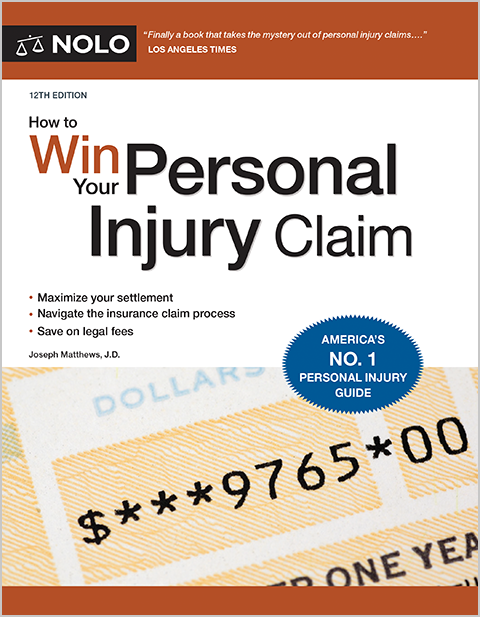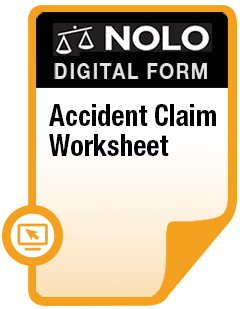A look at wrongful death claims in Alaska, including who can file the lawsuit, types of recoverable damages, and more.
If a family member has died because of someone else's wrongful act--for example, in a car accident or through medical malpractice--you may have a legal right to compensation. Alaska law allows a deceased person's spouse, children, or other dependents to pursue a wrongful death claim against the person (or people) responsible for the loss of their loved one.
State law covers what you must prove to win your case, who's allowed to sue, and how compensation is calculated and distributed. The state also has crucial deadlines for filing your case in court. The rules for these cases can be complicated, and it's important to understand how Alaska law applies to your situation.
What Is "Wrongful Death" in Alaska?
Under Alaska law, a wrongful death is defined as a death that results from a "wrongful act or omission of another." In other words, this type of claim can arise when one person dies due to the legal fault of another person or entity.
A wrongful death lawsuit may be filed in any situation where the deceased person, had they lived, could have brought a personal injury claim to court. For example, a lawsuit could be brought if the deceased died as a result of:
- a negligence-based incident (such as a car accident)
- medical malpractice, or
- an intentional act.
(Alaska Statutes § 09.55.580 (2024).)
A Wrongful Death Might Also Be a Crime
In some cases, someone could face criminal charges and a wrongful death lawsuit for the same act. Intentional acts are more likely than accidents to lead to criminal charges. For example, someone who intentionally kills another person could be charged with murder, and also face a civil lawsuit for wrongfully causing the victim's death.
Accidental deaths are less likely to result in criminal charges. But sometimes a person's behavior can be so reckless that they are criminally liable for a death even though they didn't intend to hurt anybody. For example, someone who causes a fatal car accident because of reckless or impaired driving could be charged with vehicular manslaughter.
Keep in mind that a wrongful death claim is no less valid just because the death was accidental, or because the person responsible was not charged with a crime. Someone who causes a death through negligent--but non-criminal--behavior can still be liable in a wrongful death lawsuit.
Proving Liability in a Wrongful Death Case
In a wrongful death case, the plaintiff must prove that the defendant's irresponsible or intentional act caused the victim's death. The specifics of what the plaintiff must prove will differ depending on the kind of case they file. For example, in a negligence case the plaintiff must prove that the defendant's irresponsible behavior directly led to the victim's death.
In a civil lawsuit, the defendant's liability must be shown only "by a preponderance of the evidence." This means the plaintiff must show that it is more likely than not that the defendant caused the victim's death through negligence, an intentional act, or some other legal fault. This civil standard is much less demanding than the standard in criminal cases, where the prosecution must prove the defendant's guilt "beyond a reasonable doubt."
Learn more about how to prove a wrongful death case.
Who Can File a Wrongful Death Claim?
In most personal injury cases the victim can file a lawsuit on their own behalf. But in a wrongful death case, someone else must step in to seek compensation from the individual or entity that caused the death.
A Wrongful Death Case Must be Brought by the Deceased's Personal Representative
In many states, the deceased person's family members are allowed to bring a wrongful death claim to court. But in Alaska, the personal representative of the deceased person's estate (called an "executor" in some states) must file a wrongful death lawsuit. (Keep in mind that you're allowed to name a relative, like a spouse or child, as your personal representative.)
Designating a personal representative is an important part of estate planning. Courts will almost always defer to the deceased's wishes when it comes to who acts as their personal representative. But if the person did not name anyone, then the court will appoint someone using guidance provided by Alaska's estate planning laws. (Alaska Statutes § 13.16.065 (2024).)
The personal representative is responsible for "wrapping up" the deceased person's finances. This includes tasks like locating the deceased's assets and ensuring that their property is distributed according to their wishes. They are also responsible for using assets from the estate to pay any outstanding bills or taxes.
The personal representative is also responsible for handling any legal issues affecting the estate. So, if the deceased died because of someone else's careless or intentional act, then it's the executor's job to pursue any legal action.
(Alaska Statutes § 09.55.580 (2024); Alaska Statutes § 13.16.350(c) (2024).)
Can Parents Bring Claims on Behalf of Deceased Children?
Alaska's wrongful death law assumes that the deceased was an adult with a spouse, children, or other dependents. But the state has two other laws that allow parents to for the death of:
- a child who was "below the age of majority" (that is, under 18 years old), or
- an "unborn child" (this law cannot be used to sue over a legal abortion).
(Alaska Statutes § 09.15.010 (2024); Alaska Statutes § 09.55.585 (2024).)
These claims entitle plaintiffs to different kinds of damages than the ones available in a wrongful death case. We'll talk more about that in the next section.
Get more details about who has the legal right to file a wrongful death lawsuit.
How Do Damages Work in an Alaska Wrongful Death Case?
As in other types of personal injury lawsuits, the defendant's liability in a successful wrongful death case is expressed solely in terms of financial compensation ("damages") that the court orders the defendant to pay to the plaintiffs. This is one major difference between a wrongful death lawsuit and a criminal homicide case, where a conviction can result in jail or prison time, fines paid to the state, probation, and other penalties.
Damages in Wrongful Death Cases
In Alaska, the damages from a successful wrongful death claim will be paid to the deceased person's spouse, children, or other dependents. (If the deceased had no dependents then the money will be handled in the same way as all the other assets in the estate.) These damages are intended to compensate for the financial and emotional losses caused by the person's death.
The types of potential damages in a wrongful death case—and in what amounts—will depend on the facts of each particular case. But Alaska's wrongful death law states that when determining the amount of the damages to award, the court will consider a number of factors, including:
- funeral and burial expenses
- costs of medical bills
- loss of economic support, such as the wages earned and money saved by the deceased had he or she survived
- loss of assistance or services the deceased would have provided to his or her survivors
- loss of consortium (meaning the loss of comfort, care, protection, affection, and companionship the deceased would have provided to his or her spouse or other close relative), and
- loss of prospective training and education.
(Alaska Statutes § 09.55.580 (2024).)
Courts Can Award Punitive Damages in Extreme Cases
The Supreme Court of Alaska has also ruled that plaintiffs with wrongful death claims may be entitled to punitive damages. Courts do not award punitive damages often. They are used to punish particularly outrageous behavior. For example, a court might order a defendant to pay punitive damages in a wrongful death case if that person caused the death by:
- acting maliciously, or
- deliberately putting the deceased in a very dangerous situation.
(Tommy's Elbow Room, Inc. v. Kavorkian, 727 P.2d 1038 (Alaska 1986).)
Limits on Wrongful Death Damages
Many states, including Alaska, have limited the amount of damages that can be awarded to a plaintiff in a wrongful death suit. State law caps noneconomic damages, intended to cover intangible losses like pain, suffering, and loss of consortium, at $400,000 or the deceased person's life expectancy in years multiplied by $8,000--whichever is greater. (Alaska Statutes § 09.17.010 (2024).)
On the other hand, Alaska law does not limit the amount of economic damages a court can award. Economic damages compensate survivors for the financial losses associated with the death, such as medical bills, funeral expenses, and any economic support the deceased person would have contributed to the family.
Alaska bars anyone from collecting wrongful death damages if they are convicted of the "felonious killing" of the deceased. The wrongful death statute specifies which crimes in the state's criminal code are "felonious killings." The term applies to intentional acts like murder. But it also applies to criminally negligent homicide, which is when someone is accidentally killed by another person's extremely dangerous and reckless behavior. (Alaska Statutes § 09.55.580(f) (2024); Alaska Statutes §§ 11.41.100-140 (2024).
Damages Under Alaska's "Survival Statute"
Damages under the wrongful death statute compensate survivors for the consequences they've suffered (and will continue to suffer) from the loss of their loved one. But Alaska also has a so-called "survival statute." This statute entitles the deceased's estate to seek damages for harm the deceased suffered before passing away. For example, the estate can seek compensation for any pain and suffering the deceased suffered before passing away.
In some cases, a beneficiary under the wrongful death statute may be the same person who receives damages under the survival statute. But the survival statute does not allow a plaintiff to collect the same damages they're already entitled to receive under the wrongful death statute. This is because the survival statute only covers harm suffered by the deceased before they passed away, and the wrongful death statute only covers harm suffered by the survivors.
(Alaska Statutes § 09.55.570 (2024); North Slope Borough v. Brower, 215 P.3d 308 (Alaska 2009)
Damages Available to Parents of Deceased Children
As we discussed above, parents of deceased children cannot seek damages under Alaska's wrongful death statute. However, they can seek damages under the separate Alaska law we discussed above, which allows parents to sue over the death of their minor children.
The damages in these kinds of cases are for "loss of society." While "loss of society" cannot be exactly measured in financial terms, courts attempt to provide parents with fair compensation for the "anguish, grief and loss" they have suffered.
(Alaska Statutes § 09.15.010 (2024); Gillispie v. Beta Const. Co. 842 P.2d 1272 (Alaska 1992)
How Long Do I Have to File a Claim?
Every state has rules--called statutes of limitations--that place time limits on your right to file lawsuits. Alaska's statutes of limitations give plaintiffs two years from the date of a person's death to file a wrongful death lawsuit on their behalf. If you don't file your case before the time limit expires, it will likely be barred from court entirely. (Alaska Statutes § 09.55.580 (2024).)
In rare cases, a court will decide that someone had a good reason for not filing their lawsuit in time, and therefore extend the deadline. For example, the Supreme Court of Alaska has ruled that the state's wrongful death statute of limitations does not apply to children. For example, imagine a situation where a parent dies and their 15-year-old child is their sole beneficiary. The child would not be required to file a wrongful death lawsuit within two years. Instead, they would have two years from the day they turn 18 to file a wrongful death claim. (Haakanson v. Wakefield Seafoods, Inc., 600 P.2d 1087 (Alaska 1979).)
Getting Help With Your Wrongful Death Claim
If you're considering a wrongful death lawsuit in Alaska, it's a good idea to consult a personal injury attorney. Wrongful death claims can be complicated. An attorney with experience handling these kinds of cases should be able to learn the details of your situation, explain your legal options, and help you decide how to proceed.


